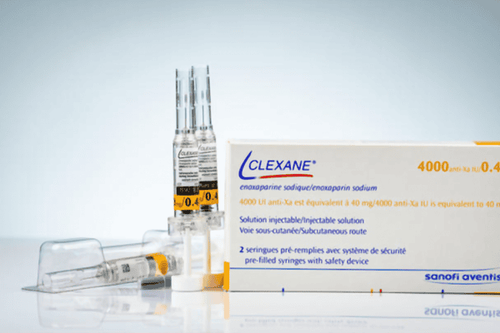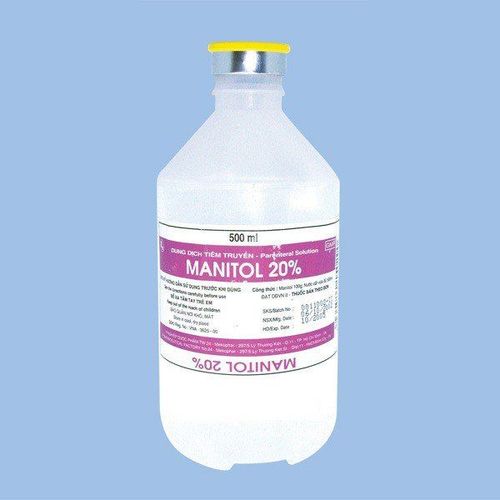This is an automatically translated article.
Intracranial vein thrombosis is considered an uncommon disease with diverse clinical symptoms, so there are many cases of intracranial venous thromboembolism that are not detected or detected late, leading to danger to the health of the patient. patient.
1. What is Intracranial Venous Thrombosis?
Intracranial venous thrombosis is a rare disease belonging to the group of cerebrovascular diseases. According to statistics, intracranial venous thrombosis accounts for 0.5-1% of the total stroke pathology. The disease has diverse clinical manifestations, so many cases are not detected or detected late, seriously affecting the patient's health.
Intracranial venous thrombosis is common in all ages and both sexes, however, the disease is reported to be more common in women than in men because of its association with pregnancy and postpartum period.
In addition, patients will also be at high risk if they are taking oral contraceptives, ENT infections, cancer or experiencing conditions of hypercoagulability, head trauma, lumbar puncture, ...
However, in about one-third of cases, the cause of intracranial venous thrombosis cannot be found or it has a sudden onset like other forms of cerebrovascular stroke.
Intracranial venous thrombosis is a disease that is easily missed because there are no outstanding specific symptoms in the early stages, so people should proactively go to a medical facility for examination, when they have symptoms or visit Routine check-ups, especially in people with the above risk factors.
2. Diagnosis of intracranial venous thrombosis
Intracranial venous thrombosis has some of the most common symptoms of headache, decreased consciousness, convulsions, and focal neurological signs. However, these manifestations are common in many other diseases, so for a definitive diagnosis, it is necessary to rely on imaging studies such as CT scan, cranial vein MRI, in some cases it is necessary to take DSA brain vein. The imaging techniques are as follows:
Computed tomography (CT scan) for diagnosis of intracranial venous thrombosis: CT scan includes contrast injection (enlargement of the dural sinuses around the blood area). non-enhanced mass) and CT angiography (aimed to show swollen areas of venous thrombosis and nonvascular areas). This technique can show focal or diffuse bulging of the vein. This technique can also visualize increased attenuation of the venous sinuses and cortical veins. Parenchymal lesions and low attenuation lesions, edema, hemorrhage. If internal cerebral vein thrombosis occurs, the thalamus and basal ganglia will be affected. The subarachnoid space may bleed. MRI for diagnosis of intracranial venous thrombosis: In the acute form, there is no empty flow in the dural sinus, but in the subacute form, the sinuses are hyperattenuated on T1 and T2-weighted images. The parenchymal lesions are attenuated on T2W/FLAIR with edema associated with hemorrhage and focal swelling or diffuse lesions. Intracranial venous thrombosis (DSA) scan: In some cases, the doctor may ask the patient to have a brain DSA scan to further evaluate the diagnosis. Lumbar puncture for diagnosis of intracranial venous thrombosis: Once a mass lesion has been ruled out, lumbar puncture will be used. If during lumbar puncture, CSF pressure > 20cm water can diagnose intracranial venous thrombosis. In addition to the above diagnostic methods, the patient may need to do some other diagnostic techniques. If edema develops first and then bleeds around, it may be due to increased venous pressure. However, because the size of the lateral venous sinuses and cortical veins varies normally, the diagnosis becomes more difficult.

Huyết khối tĩnh mạch nội sọ có một số triệu chứng thường gặp nhất là đau đầu, giảm ý thức
3. Treatment of intracranial venous thrombosis
After the diagnosis of intracranial venous thrombosis is detected, it is necessary to treat it as soon as possible. Therefore, the early and accurate diagnosis of intracranial venous thrombosis for patients has great significance in the treatment of the disease.
The most important treatment for intracranial venous thrombosis is anticoagulation, in addition, treatment should be combined with increased intracranial pressure, treating the cause if found. Specific methods of treatment of intracranial venous thrombosis are as follows:
Treatment of infections associated with intracranial venous thrombosis; Anticoagulation with Heparin followed by Warfarin for 6 months. If the state of hypercoagulability persists, it is necessary to prolong the use of the drug for the patient; If the treatment of intracranial venous thrombosis does not respond or worsens, local thrombolytic therapy should be considered for the patient; Treatment of increased intracranial pressure; Lumbar puncture can either drain the spinal cord outside or create a peritoneal spinal shunt; Using Mannitol: But if there is no response or the condition worsens, it is necessary to consider sedation, mechanical ventilation and cranial decompression surgery for the patient; Use of intravenous phenytoin or valproate anticonvulsants in patients with intracranial venous thrombosis. In summary, intracranial venous thrombosis is a rare, yet treatable, neurological condition. Effective treatment also depends on accurate and prompt diagnosis, therefore, when performing neurological examination, careful examination is required, cranial MRI and other imaging tools to avoid missing these symptoms. this rare case.
To ensure safety and prevent dangerous complications, patients need to go to a reputable hospital to conduct examination and treatment as soon as there are signs of intracranial venous thrombosis. Currently, Vinmec International General Hospital is one of the leading prestigious hospitals in the country, trusted by a large number of patients for medical examination and treatment. Not only the physical system, modern equipment: 6 ultrasound rooms, 4 DR X-ray rooms (1 full-axis machine, 1 light machine, 1 general machine and 1 mammography machine) , 2 DR portable X-ray machines, 2 multi-row CT scanner rooms (1 128 rows and 1 16 arrays), 2 Magnetic resonance imaging rooms (1 3 Tesla and 1 1.5 Tesla), 1 room for 2 levels of interventional angiography and 1 room to measure bone mineral density.... Vinmec is also the place to gather a team of experienced doctors and nurses who will greatly assist in diagnosis and detection. early signs of abnormality in the patient's body. In particular, with a space designed according to 5-star hotel standards, Vinmec ensures to bring the patient the most comfort, friendliness and peace of mind.
Please dial HOTLINE for more information or register for an appointment HERE. Download MyVinmec app to make appointments faster and to manage your bookings easily.













